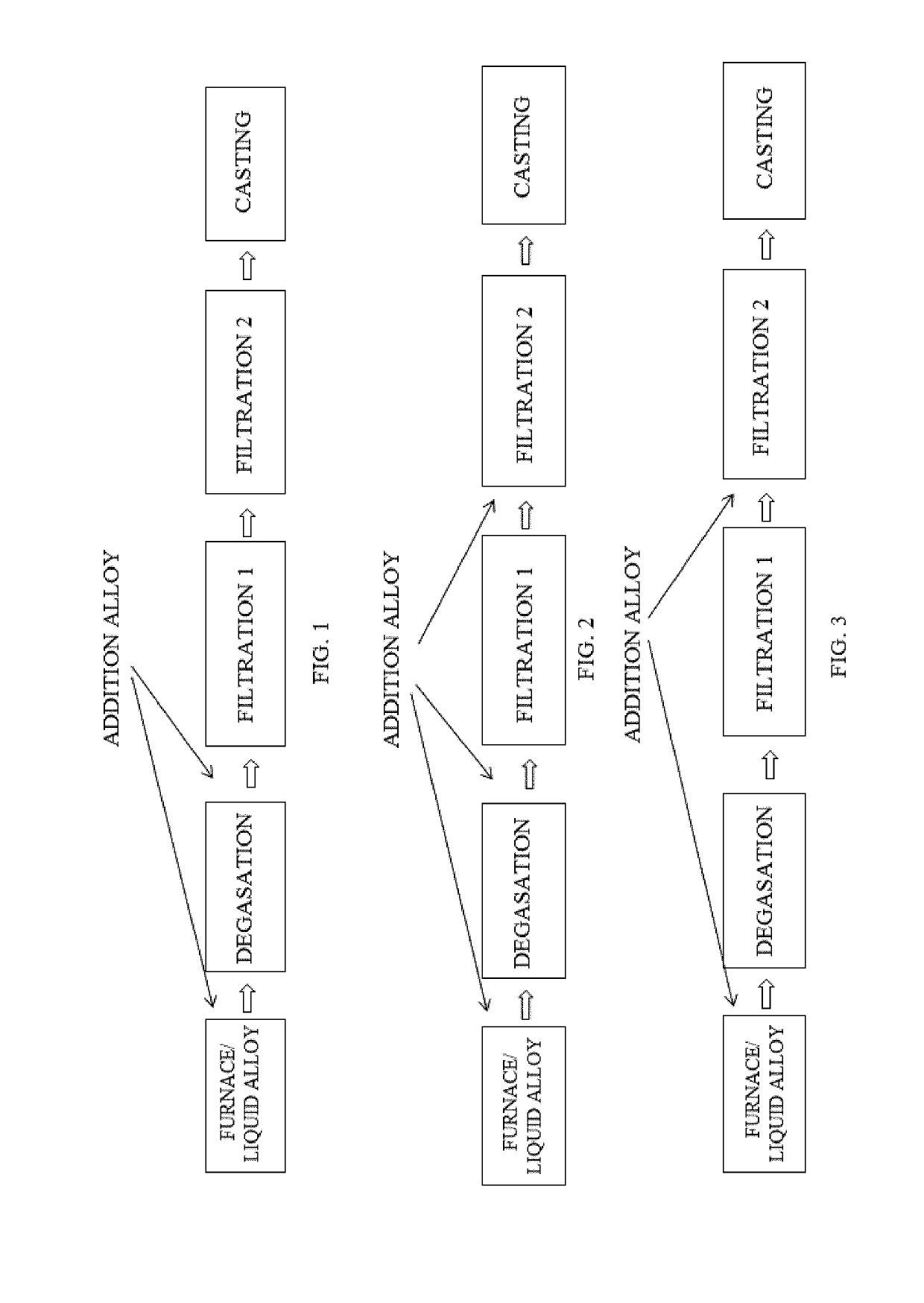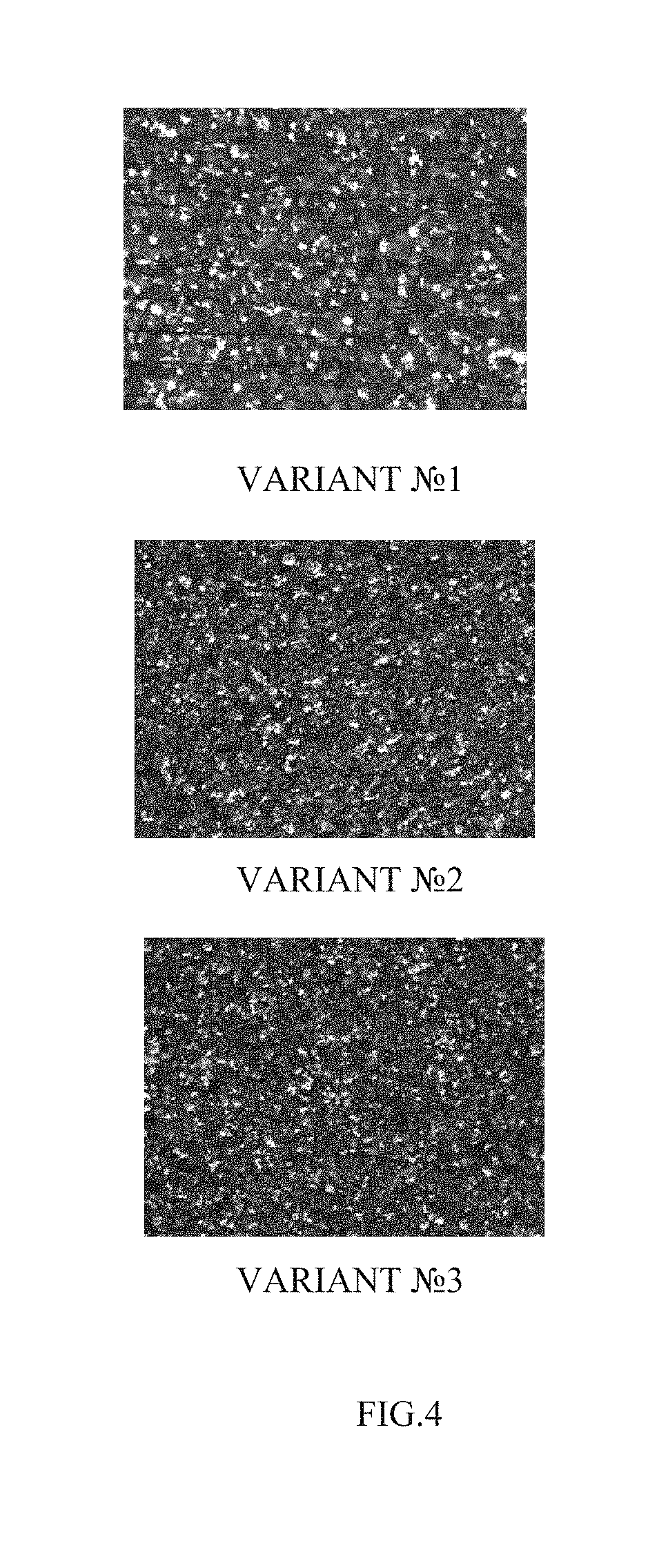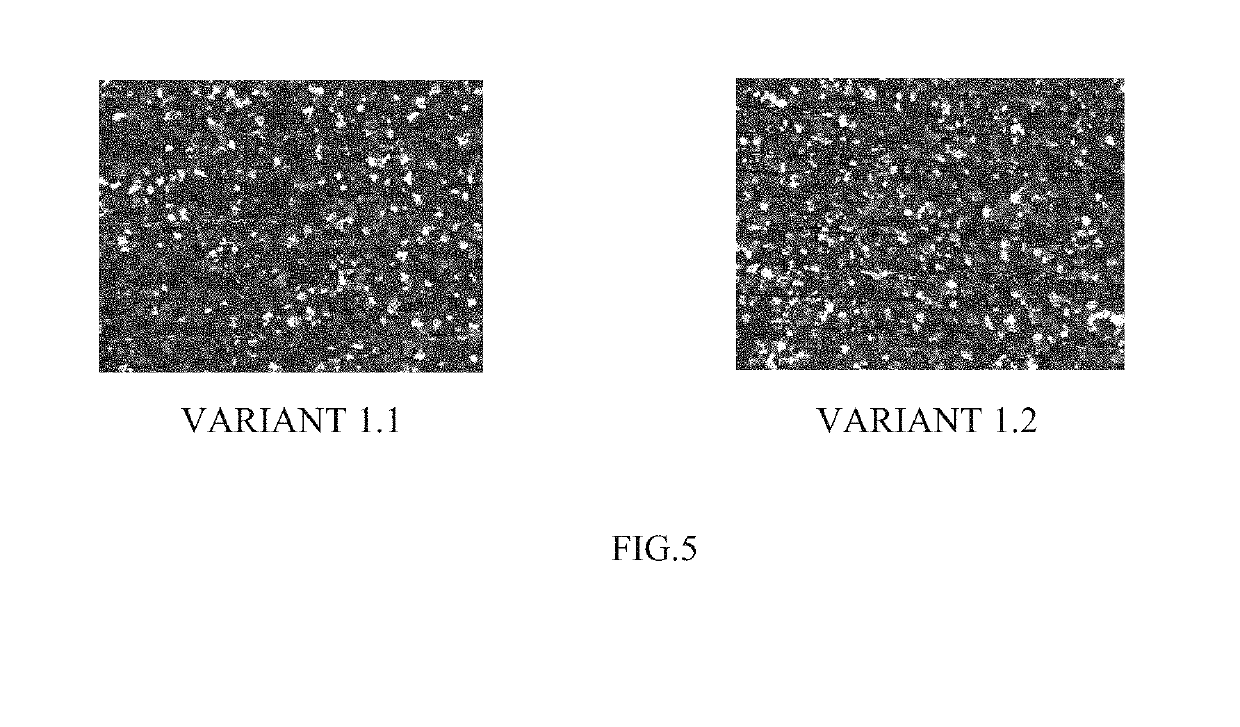Method of casting articles from aluminium alloys
a technology of aluminium alloys and casting methods, applied in the field of aluminium metallurgy, can solve the problems of increased cost, increased flow rate of addition alloys, and increased risk of unsatisfactory quality of addition alloys, and achieves the effects of improving plastic and mechanical properties, and small grain siz
- Summary
- Abstract
- Description
- Claims
- Application Information
AI Technical Summary
Benefits of technology
Problems solved by technology
Method used
Image
Examples
Embodiment Construction
[0018]The molten aluminum from the alloying furnace is fed into the crystallizer through a system of casting troughs. A degassing unit, a fine filter and a coarse filter, namely a ceramic foam filter are built into the system of troughs. The melt is prepared in the alloying furnace as follows: the aluminum raw material coming from the pot room is poured into the furnace, and then the melt is alloyed and refined. After the melt preparation it is fed through the system of troughs, including degassing and filtration stages, to the crystallizers, where semi-continuous casting of flat ingots was performed.
[0019]At the first stage, the melt undergoes a degassing stage. Degassing is carried out by feeding a certain amount of inert gas (for example, argon) to a system of rotating impellers; upward bubble flows in the melt are created under the influence of centrifugal force. The melt is saturated with bubbles. The intensive stirring of the melt occurs in the degassing unit; at the same time...
PUM
| Property | Measurement | Unit |
|---|---|---|
| Size | aaaaa | aaaaa |
| Size | aaaaa | aaaaa |
| Speed | aaaaa | aaaaa |
Abstract
Description
Claims
Application Information
 Login to View More
Login to View More - R&D
- Intellectual Property
- Life Sciences
- Materials
- Tech Scout
- Unparalleled Data Quality
- Higher Quality Content
- 60% Fewer Hallucinations
Browse by: Latest US Patents, China's latest patents, Technical Efficacy Thesaurus, Application Domain, Technology Topic, Popular Technical Reports.
© 2025 PatSnap. All rights reserved.Legal|Privacy policy|Modern Slavery Act Transparency Statement|Sitemap|About US| Contact US: help@patsnap.com



